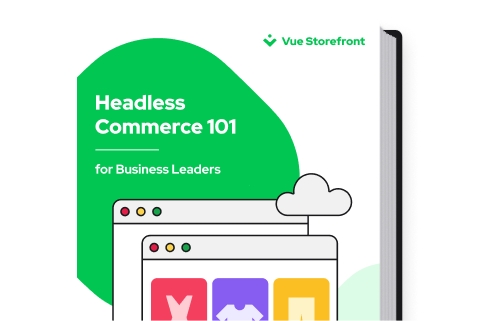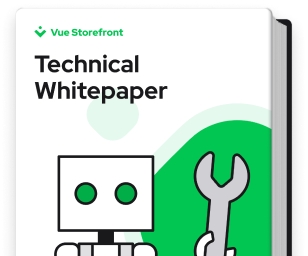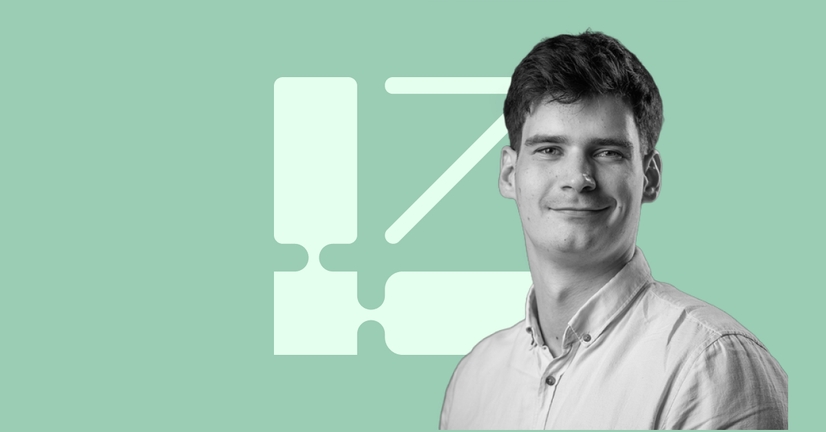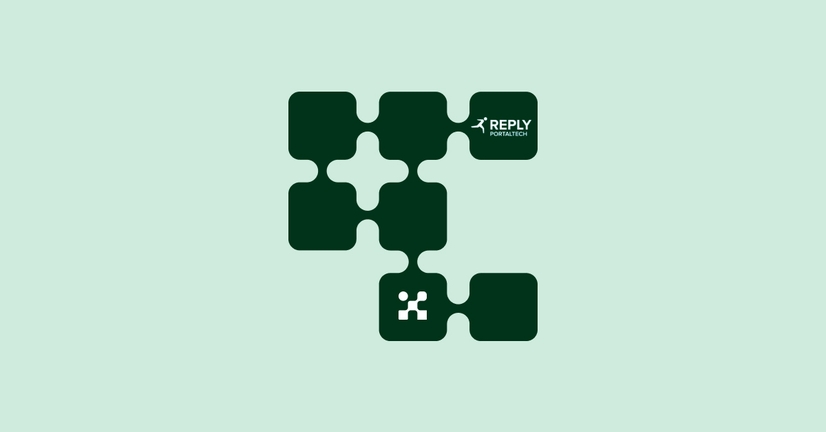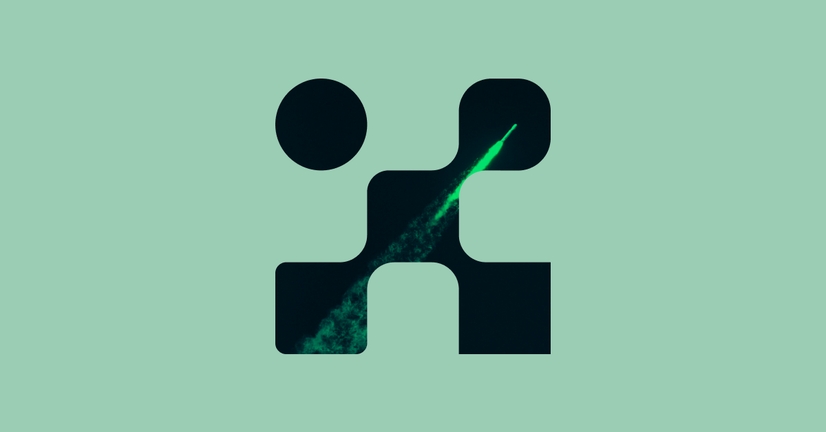Explore by Category:
Headless Commerce
Headless Websites Are on The Rise: What Are They?
Change is an unavoidable aspect of digital experiences. This is unquestionably the situation with headless websites, which have been subverting the traditional monolithic approach in recent years. This piece will shed light on what precisely a headless website is and give you a clear idea of how to start your headless journey.
What is a headless website?
A headless website is a real-life example of headless architecture , which decouples a system's frontend and backend layers. Those two parts are detached from each other to allow for fast page loads, easy updates on the presentation layer, and more business flexibility.
Managers of headless websites use headless CMS to add, test, update and distribute content on multiple presentation layers without a developer’s help.
Although widely spread throughout the eCommerce industry, headless websites can be successfully applied to different types of websites.
Headless website vs. headless commerce website: Are they the same?
Headless websites are widely implemented within the eCommerce industry, which quickly adapted the new approach of building online stores to gain more flexibility, better web performance, and freedom to scale. This approach to building online stores with headless architecture is known as headless commerce .
Headless websites, however, can be widely implemented within industries other than eCommerce.
Examples of headless websites
Many businesses in a number of industries have witnessed significant improvements in site performance after ditching all-in-one software and opting for headless. eCommerce websites are the most common but not the only group of examples.
Alokai
At Alokai we build Frontend as a Service for composable commerce that helps deliver custom frontend at a fraction of cost and time. At the same time, we practice what we preach, embarking on the headless journey with our website.
We decided to ditch a traditional CMS and build a headless website with the help of our Growth Partner, Contentstack, one of the top headless CMS providers. Our main goal was to implement a business-oriented CMS with broad functionality. As Contentstack offers advanced support and extended customization options for developers on the frontend, this seemed like the right fit.
If you want to learn more about our headless journey, subscribe to our newsletter to get notified as soon as the case study is published.
Berlin Brands Group (BBG)
Berlin Brands Group (BBG) is a D2C industry pioneer establishing, growing, purchasing, and scaling brands for over 17 years. The company sells over 4,800 goods to customers in 28 countries, which requires enormous flexibility and unlimited scaling.
BBG needed a lightning-fast interface for composable commerce with limitless integration options. Alokai provided exactly the frontend that BBG needed. Working with a Frontend as a Service enabled the organization to decompose the monolith and become independent of vendor-specific integrations.
Read the full Berlin Brands Group case study
Winkelstraat.nl
Winkelstraat.nl is the largest luxury fashion marketplace and community in the Netherlands. It brings together over 300 shops and companies from around Western Europe under one roof to bring them closer to Millenial and Gen-Z audiences.
The company focused on decreasing its reliance on Magento by using a separate frontend solution. They opted for composable commerce and aimed to obtain higher performance and flexibility while ensuring a shorter Time-to-Market.
Winkelstraat.nl chose Alokai because of its ability to reduce Time-to-Market, supply them with the necessary flexibility, and provide a comprehensive toolbox for scalable frontend architecture.
Read the full Winkelstraat.nl case study
LoveCrafts
LoveCrafts had to find a successor for their commerce platform after Magento 1 support ended. The company saw headless architecture as a natural development path.
LoveCrafts recognized from the start that they would need to select the perfect frontend. The primary requirement was that it should be as lightweight as possible to empower omnichannel strategy and increase performance.
There was simply no other frontend solution than Alokai that offered the flexibility that LoveCrafts required.
Read the full LoveCrafts case study
Other examples:
- Netflix was one of the first global companies to embrace headless architecture. The reason for that was tightly coupled components within the monolithic app, prone to cause several days of downtime in case of even the tiniest error.
- Amazon is another example of a company that decoupled the system's frontend and backend layers. Long deployment times and difficulties in adding new features slowed the company’s growth. This was a powerful blocker, given the scale of operations on Amazon’s website.
- For Uber, a monolithic application was just fine at the time when the company was a local business. Yet, it became a massive roadblock when scaling the business to international markets. By separating frontend and backend, the headless architecture enabled the company to grow smoothly.
Components of a headless website
Frontend
Frontend is the presentation layer of your website. It presents data stored in the backend and displays it in an organized way to the user.
Your frontend technology directly influences the digital experiences of your website visitors. Page speed, UX, customer experience , conversion – it all happens on the frontend. Because of this, you need a fast and mobile-first presentation layer that ticks all the boxes.
A proper frontend technology should be a progressive tech ecosystem that binds all headless components with API. It’s a “head” for the entire headless web development project. You can build your custom frontend from scratch or use pre-built and pre-optimized frontend architecture known as Frontend as a Service .
Headless CMS
A headless CMS (Content Management System) allows the storage and organization of content separately from the website’s presentation layer. It can be described as a digital repository for blog posts, images, and videos that is a backend system for content management.
Headless CMS delivers an interface for editors responsible for managing the content. On the developers’ side, it enables the delivery of content to multiple channels and devices via a RESTful API or GraphQL API, allowing users to choose the best frontend tooling.
Examples of headless CMS include Bloomreach, Contentstack, Contentful, Storyblok, and more.
API
API (Application Programming Interface) is a software intermediary that allows independent applications to communicate smoothly. In the case of headless websites, API connects frontend and headless CMS to provide content to multiple channels. In the case of headless commerce, API would connect all headless solutions, including an eCommerce platform and other 3rd party tools like Search or Payment.
API is standardized across all the technologies and connects them quickly and flexibly. As a vital component of future-proof enterprise technology, it propels current and future digital experiences.
Alokai out-of-the-box integrations with leading headless CMS providers include ready API connection between two parties, so there is no need for customers to allocate additional resources for building it from scratch.
Hosting
Fast, scalable, and secure infrastructure is crucial in a successful headless setup.
Hosting response time directly influences your website performance – this is why a reliable, performance-oriented cloud, with 24/7 support and high uptime, should be your priority.
How to start building a headless website
The frontend is an essential part of your online business, where the entire customer journey happens. Therefore, you need a lightning-fast and a mobile-optimized presentation layer to build and control first-class customer experiences. To ensure that, you need to start headless web development with the frontend, opting for Frontend as a Service.
Frontend as a Service provides enterprises with a one-stop shop solution for building and launching performant storefronts in one location using a single tool. It offers customers a Microservices-based, API-first, Cloud-native and Headless (aka MACH ) composable frontend environment.
Start with Alokai
Alokai is a Frontend as a Service (FEaaS) that enables unlimited customization and easy connection between your services to unlock much faster frontend development.
Unlike custom frontend developments and low-code solutions, you can get the best of both worlds. Alokai helps to drastically cut down on development time and costs while providing the same level of customization and code ownership as custom-made frontend thanks to its out-of-the-box integrations and customizable frontend boilerplate components.
Alokai provides value throughout the whole lifecycle of your headless project: from design and development to global scaling.
Download our technical whitepaper and learn more about how Alokai can help you fast-track your headless web development project.
Share:
Share:
More in Headless Commerce
Frequently asked questions
Ready to dive in? Schedule a demo
Get a live, personalised demo with one of our awesome product specialists.



















